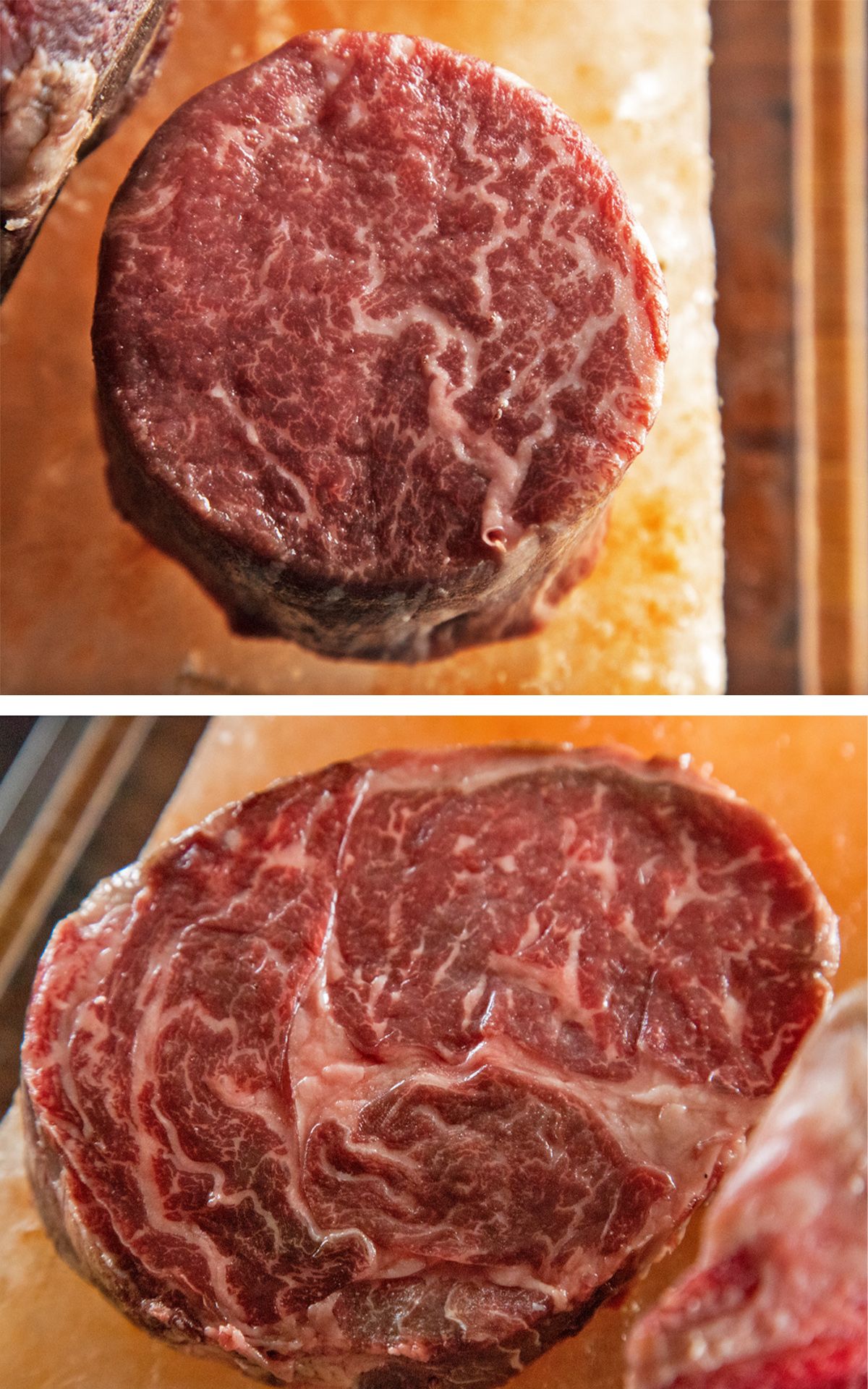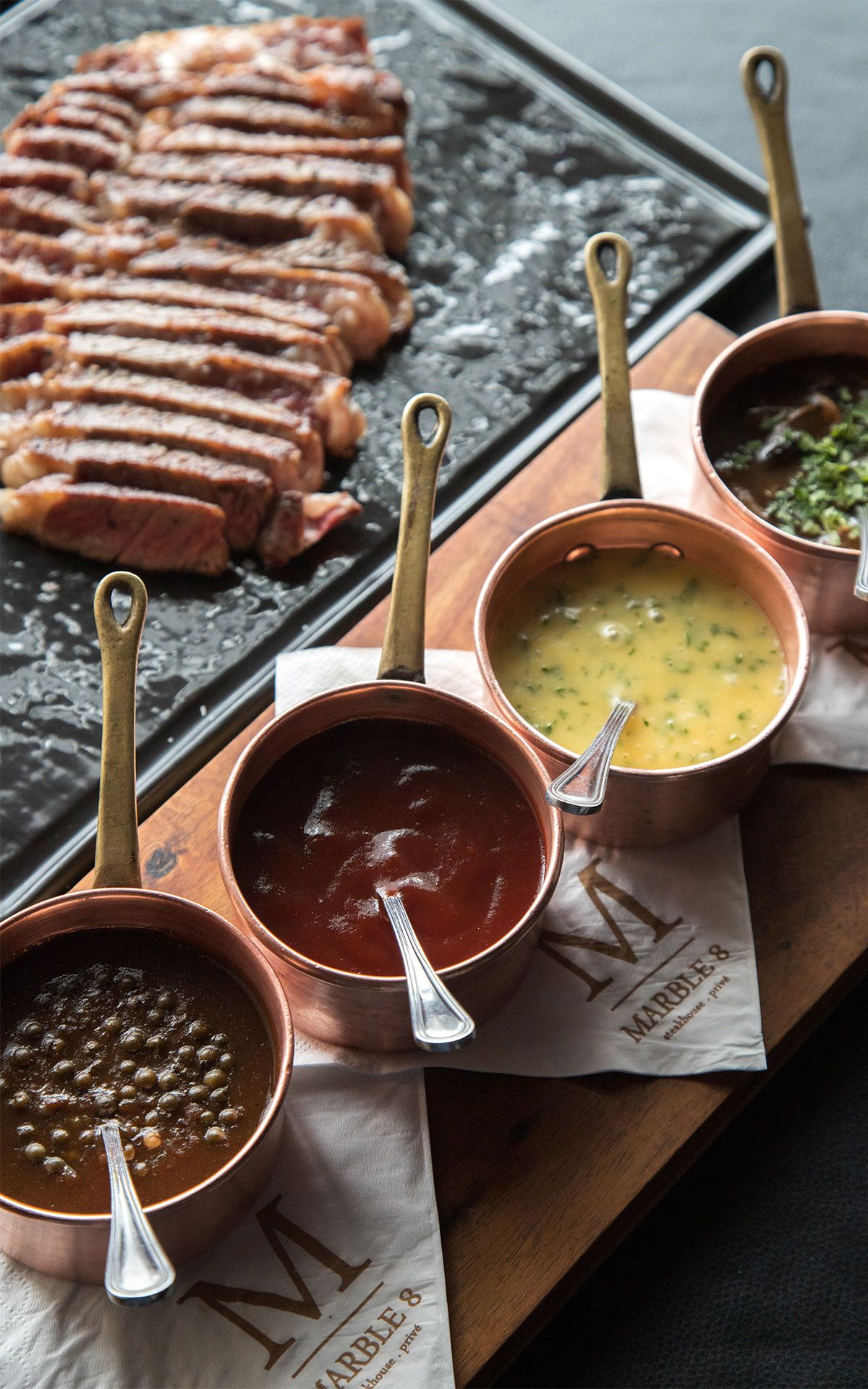
1. Marbling
Marble 8, the sole steakhouse on Tatler Dining's Top 20 Restaurants list, received its namesake from the term 'marbling,' which Modesto Marini describes as such: "It is the intramuscular fat in meat or the fat that forms within the cattle's muscles. These white flecks and streaks that stand out against the red meat are what give marbled beef its tenderness and contribute to the flavour and juiciness of the meat."
Aesthetically akin to the wispy streaks of paint solidified in glass marbles, these 'rivulets' of fat are therefore indicative of a steak's marbling or quality.
See also: Sizzling Treats Catered To Carnivores At Brasserie 25, Hotel Stripes


